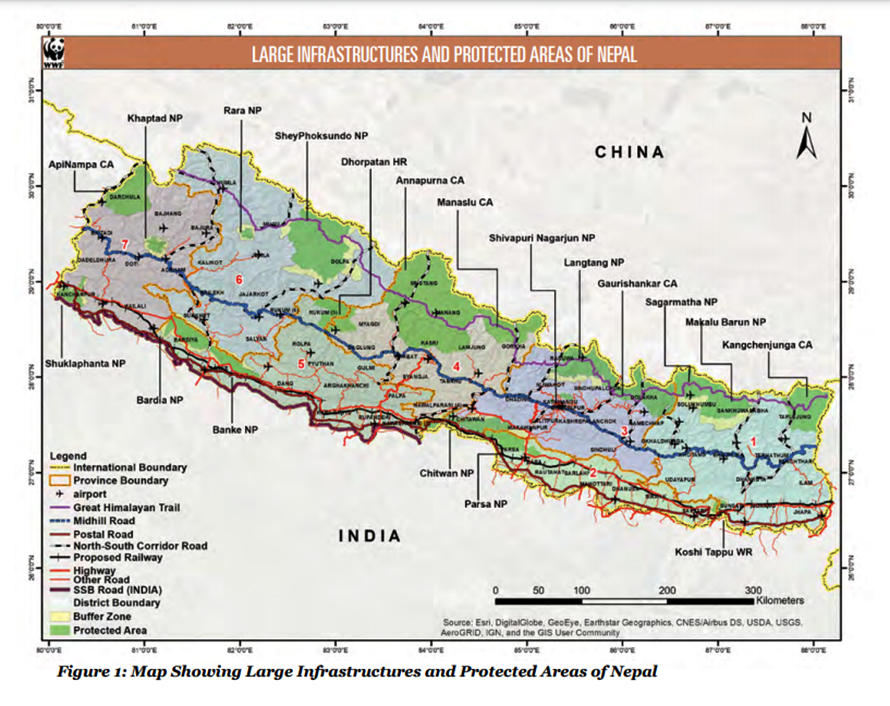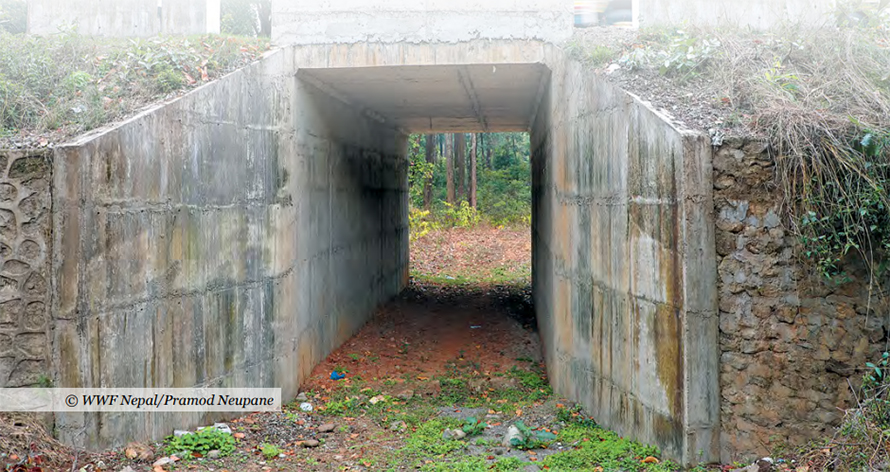On Friday evening last week, Nanda Kala Thapa, 52, of Kauwapur, Lamkichuha municipality-4 of Kailali district, was dragged away by a tiger while she was travelling on a motorcycle driven by her son on the Amreni-Chisapani section of Bardiya National Park. Also, in 2001, a tiger had killed one person in the same place.
The next morning, a car knock killed a 10-year-old female tiger along the East-West Highway in the Aadhabhar forest area, Jitpur Simara sub-metropolitan city-1 of Bara district.
According to the Department of National Parks and Wildlife Conservation, such incidents have increased in recent years, especially on the highways that cross densely forested areas of national parks in the Terai region.
What’s wrong with the system?
In the section of the Bardiya National Park where the accident happened on Friday, the Nepal Army has been recording times of the vehicles at different stations to keep a control on their speed. It is prohibited to drive at a speed more than 40 kilometres per hour in other park areas along the highway.
Hari Bhadra Acharya, an ecologist at the department, says that the clashes between protected wildlife and humans on the highways have increased the risk on both sides. According to him, about 200 km section of the 1,028 km-long East-west Highway falls within the national park areas.
About 100 km, 30 km, 8 km, 20 km, and 7 km sections of the highway falls within the area of Banke National Park, Bardiya National Park, Shuklaphanta National Park, Parsa National Park, and Chitwan National Park respectively.

Besides these, an additional 200 km of the highway falls within the main habitat for wildlife inside the forests. And, the number of highways and rural roads passing through dense forest areas is increasing. No study has been done on how many kilometres of roads pass through forest areas in Nepal, which has a road network of about 100,000 kilometres.
Forest areas are chosen for road construction in most of the cases to avoid the compensation dispute. Also, recently, the number of unpaved roads being blacktopped is increasing. Due to this, the threat to wildlife has increased day by day, says Acharya.
According to him, speeding vehicles on wide blacktopped roads have become a big danger for the wildlife and passengers are at risk if they defy the prescribed speed limits.
Prey of the vehicles: Wildlife
A study conducted last year found that about 500 wild animals had died in road accidents in the last four years. Of the 591 deaths in the fiscal year 2019/20, 108 were due to road accidents.
As per the Department of National Parks and Wildlife Conservation, 199 wild animals were killed in road accidents in the fiscal year 2018/19, 124 in 2017/18, and 133 in 2016/17.
However, the conservationists at the World Wildlife Fund, Nepal, assume that the number of the wildlife killed in road accidents could be much higher than currently recorded stressing that along with the highways passing through dense forest areas, various infrastructure projects have also been the cause of many wildlife accidents.
The number of wild animals that died due to the injuries sustained in road accidents in the forest areas has not been counted. Not only in the forest areas but also in the large linear infrastructure areas like canals and power transmission lines, wild animals have fallen prey to accidents.
According to a study conducted by the World Wildlife Fund, most wild animals are at the risk of road accidents during the winter season. Also, it is found that most wild animals had got into road accidents while searching for water, ground vegetables, or preys.
The WWF had conducted another study on the wildlife underpasses constructed at four places of Ramnagar and Aaptari sections of Muglin-Narayangadh road from August 2017 to June 2018. For the first time in Nepal, underpasses have been built for wildlife there.
Studies have shown that the movement of wild animals in the road area is more when there is a lack of water and food in the habitat. In winter, among the wild animals using underpasses, most were deers, boars, porcupines, mongeese, langurs, and wild cats. Only 10 per cent of them were large mammals such as tigers, leopards, and rhinos.
Underpasses and overpasses for safety

Lately, not only on the highways but also in large linear infrastructures such as big canals and transmission lines, the number of wildlife deaths is increasing. A WWF scientist Dr Gokarna Jung Thapa says crossings such as underpasses and overpasses are mandatory for wildlife in Nepal’s infrastructure including highways.
Further, he adds, “The infrastructures have not only put wildlife at risk of death but also have affected their genetic development as their natural movement has been disrupted. And, this will add more challenge in the protection of the wildlife.”
Government preparedness for wildlife conservation
But, the government has not yet responded to such suggestions from experts. It has been more than four years since the Department of National Parks and Wildlife Conservation started preparing to bring a guideline for such infrastructures. Acharya says that the draft of the guideline has been prepared.
An underpass for wildlife is being constructed on the Kathmandu-Nijgadh Fast Track. However, Keshav Kumar Sharma, the Director-General of the Department of Roads, says that there is no plan to have such ‘crossing’ infrastructures along the existing roads.
“While upgrading roads, however, we can build underpasses for animals where they are needed,” says Sharma.


























